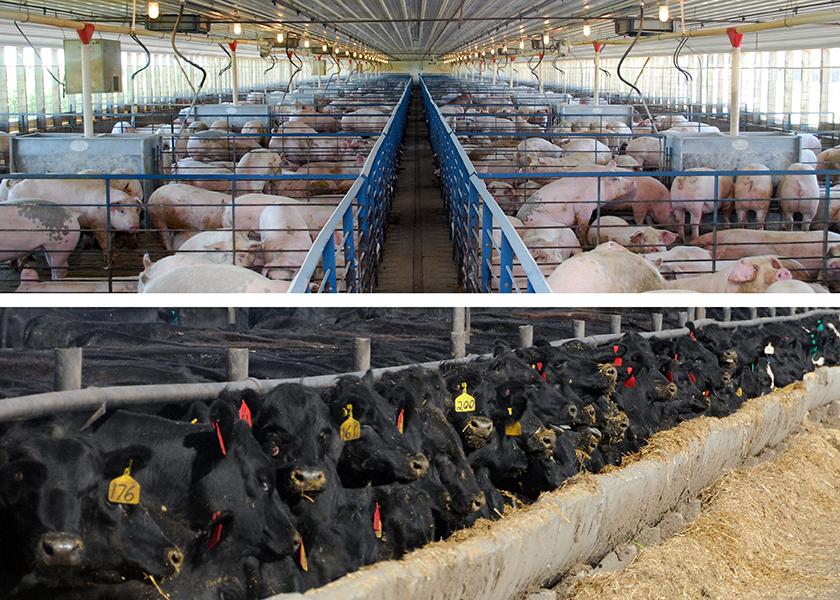Create Value and Increase Demand: How Do Livestock Producers and Crop Growers Work Together?

The U.S. agriculture industry is a web of connections between livestock producers and crop growers in areas of feed production, commodity value and exports, manure and resource management and sustainability.
Livestock producers and crop growers work simultaneously to provide high quality red meat to the U.S., and across the globe.
Value in Exports
According to the U.S. Meat Export Federation (USMEF), 15 percent of U.S. beef and 29.4 percent of U.S. pork was exported in 2021.
This global demand equated to $407.22 per head of fed cattle slaughtered and $62.86 per head of hogs.
As demand grows, livestock producers are encouraged to increase output on their operations, increasing demand for feed along with output from crop growers.
Specifically, corn and soybeans experience a jump in demand and increase in value.
For corn, USMEF estimates 2021 beef and pork exports contributed 12 percent of bushel value to corn. Considering an average price of $5.48 per corn bushel, this equates to $0.66 per bushel.
For soybeans, 2021 pork exports contributed 12.6 percent of soybean bushel value, equating to $1.65 per soybean bushel—considering an average price of $13.13 per bushel.
Feed Use by Cuts Exported
USMEF shares a breakdown of corn, dried distillers grains and soybean meal usage per cut of beef and pork carcass.

Manure and Resource Management
On a recent "AgriTalk" segment, Heather Hill, president of the National Pork Board, described soil health as a mutual benefit between livestock producers and crop growers.
What was once considered a waste byproduct, manure is now widely considered an asset in improving soil health and moving the needle of sustainability in agriculture.
As prices of commercial fertilizers continue to rise, manure provides a more natural, sustainable and cost-effective alternative for growing plants.
Efficiency in Operation
Hill also describes profitability and economics of farming as part of the sustainability story. Diversified operations like Hill’s—that grow their own feed to provide for their livestock—might have an economic advantage over those buying feed during times of high commodity prices.
“We’re really zoning in on where we can be more efficient. How can we do more with less? Just because we've done something for many years, it's time to reevaluate our practices and make sure what we're doing is the right decision,” Hill explains.
As the industry continues to face domestic and worldwide challenges and economic pressure, producers might find value in working together to mutually benefit their operations and create a more sustainable future.







